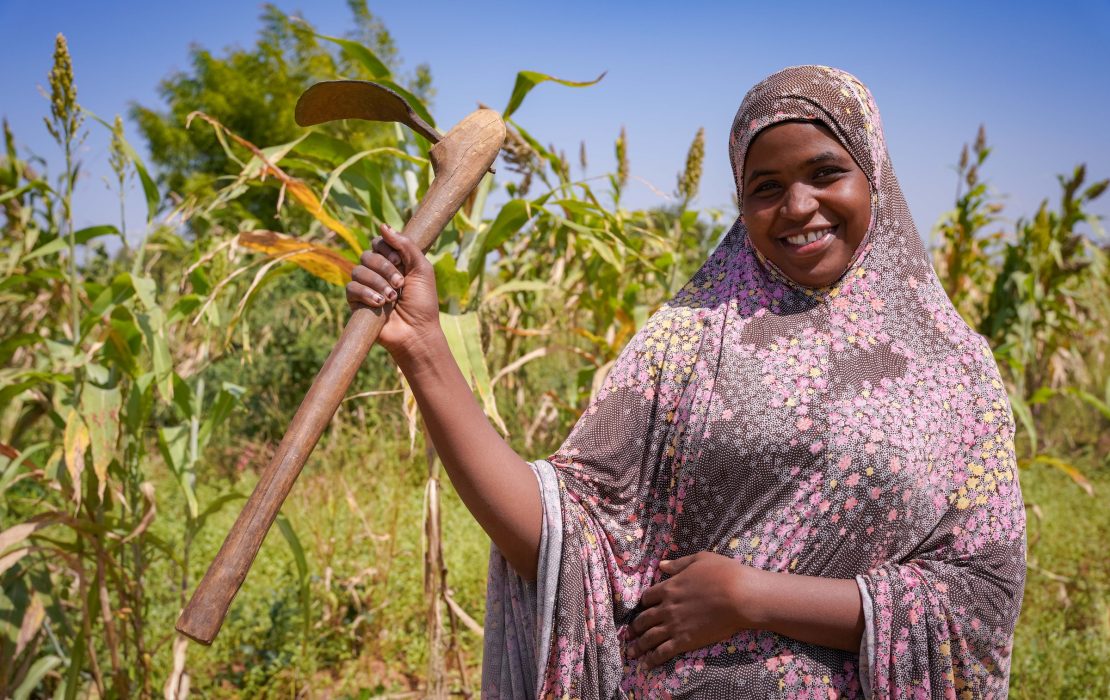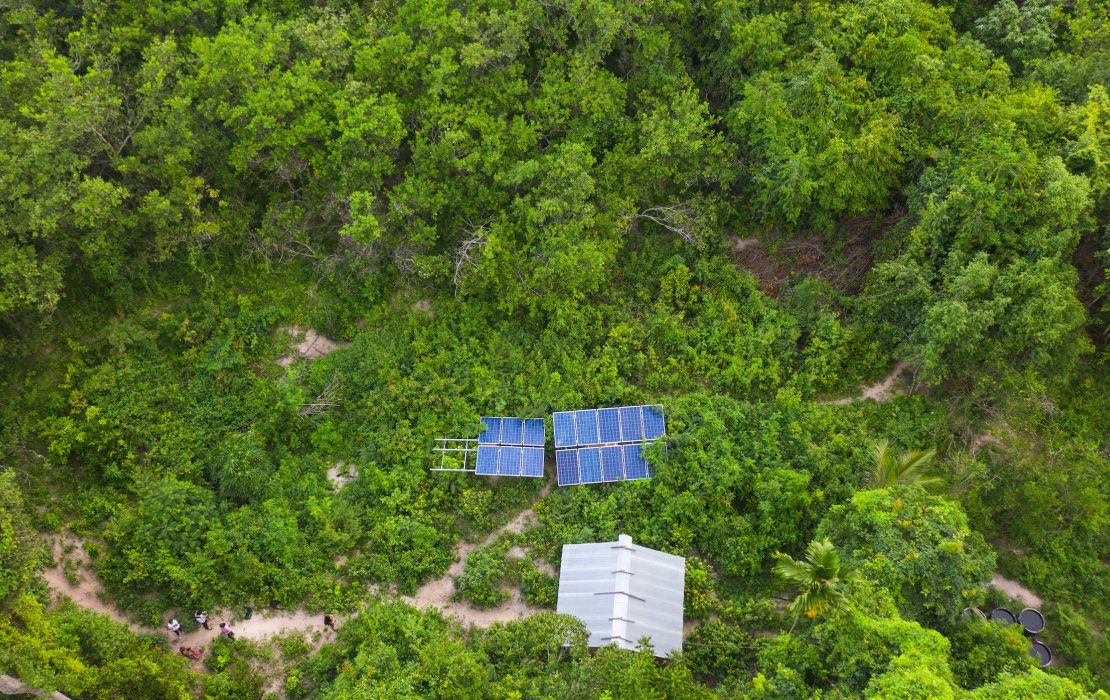
Photo: BRANTV
As a Small Island Developing State in the south western Pacific, Vanuatu faces a series of challenges due to its small size, remoteness, and vulnerability to climate change impacts and economic shocks. These factors not only threaten the well-being of its population, around 300,000 people spread across 83 islands, but also hamper sustainable development efforts.
A particular challenge is energy access. It is estimated that 30 percent of households across the country’s scattered island communities still lack electricity – although this number could be even higher due to connectivity issues. However, in recent years, renewable energy solutions have begun ushering in the prospect of change.
In the village of Loltong on the island of Pentecost, the recent deployment of a hybrid solar and hydropower minigrid has transformed life for its 300 residents. Previously, Loltong suffered from an almost complete lack of reliable power. Now, the minigrid has electrified approximately 100 households, two schools, a clinic, several retail shops, and various community buildings, unlocking a host of social and economic opportunities that once seemed out of reach.
“For the first time, the people of Loltong can cook safely with electric pots and plug in their kettles to boil water,” says Caulton Sani, one of the community’s leaders. “Electricity allows women to weave and sew in the evening. Children can do their homework under good light and families are holding more gatherings at night.”
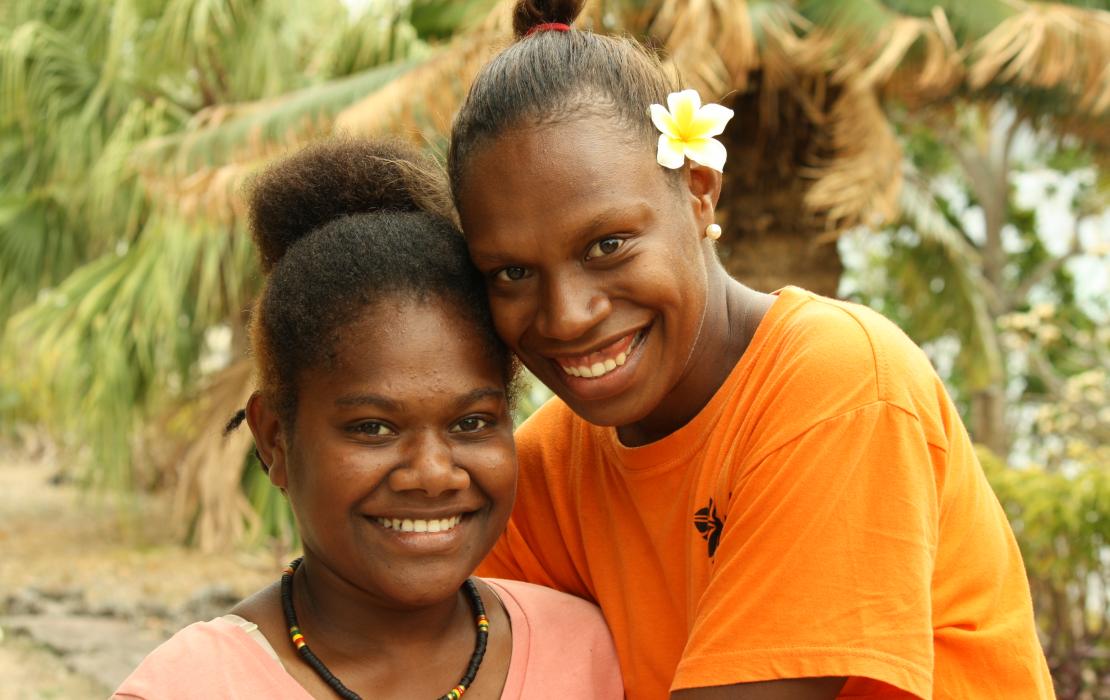
Photo: Ildiko Hamos/UNDP in the Pacific
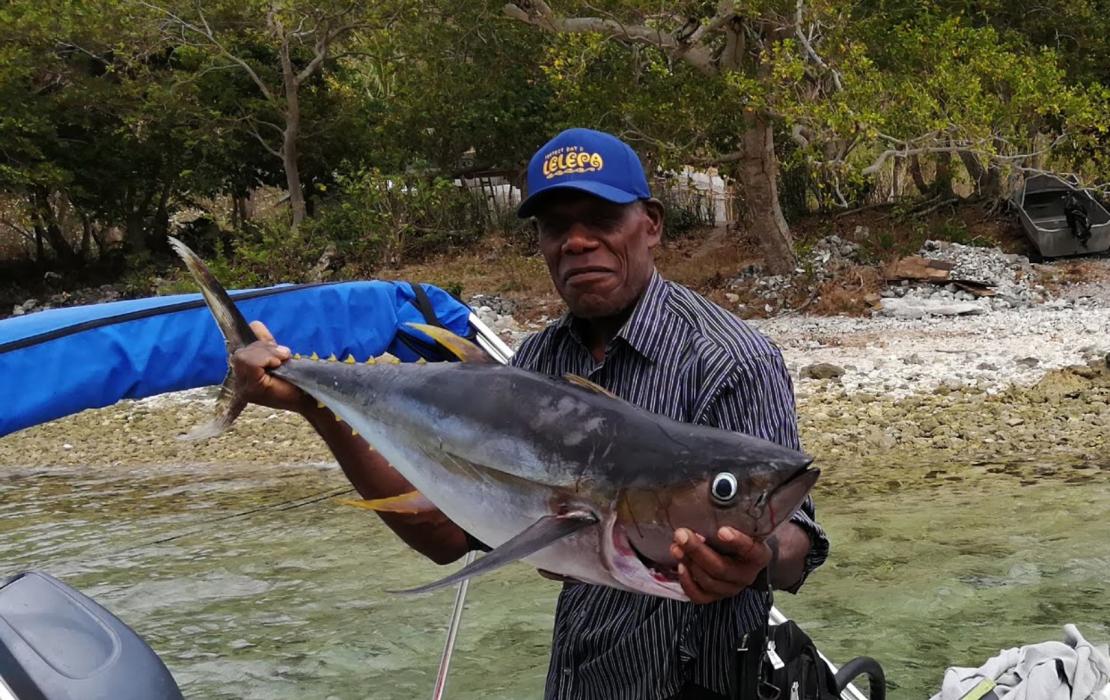
Photo: Ildiko Hamos/UNDP in the Pacific
Another significant change has been in the preservation of fresh produce, especially crucial for communities dependent on fishing. On the island of Emae, the Marae fishing community can now refrigerate their catch. As a result, the local fish market operates with enhanced efficiency, improving food quality and boosting economic gains.
“Entire fish markets are now powered by solar energy, showing how productive uses of off-grid solar can lead to economic benefits,” remarked Simon Jack, Vice Chairman of the Marae Community Fish Market. “By shifting to solar power, we've drastically cut our reliance on kerosene oil, enhancing our energy self-sufficiency and achieving remarkable cost savings.”
Schools and health facilities also benefit greatly from distributed renewable energy solutions.
“Before electricity, assisting a mother during childbirth was perilous, relying only on a simple torch,” says Cathrin Atu, a nurse at the Community Health Center in Liro, on the island of Paama. “Now, with steady lighting, we can adequately monitor and manage childbirth.”
The renewable energy systems have also enabled the safe storage of medicines and vaccines, crucial for effective healthcare services.
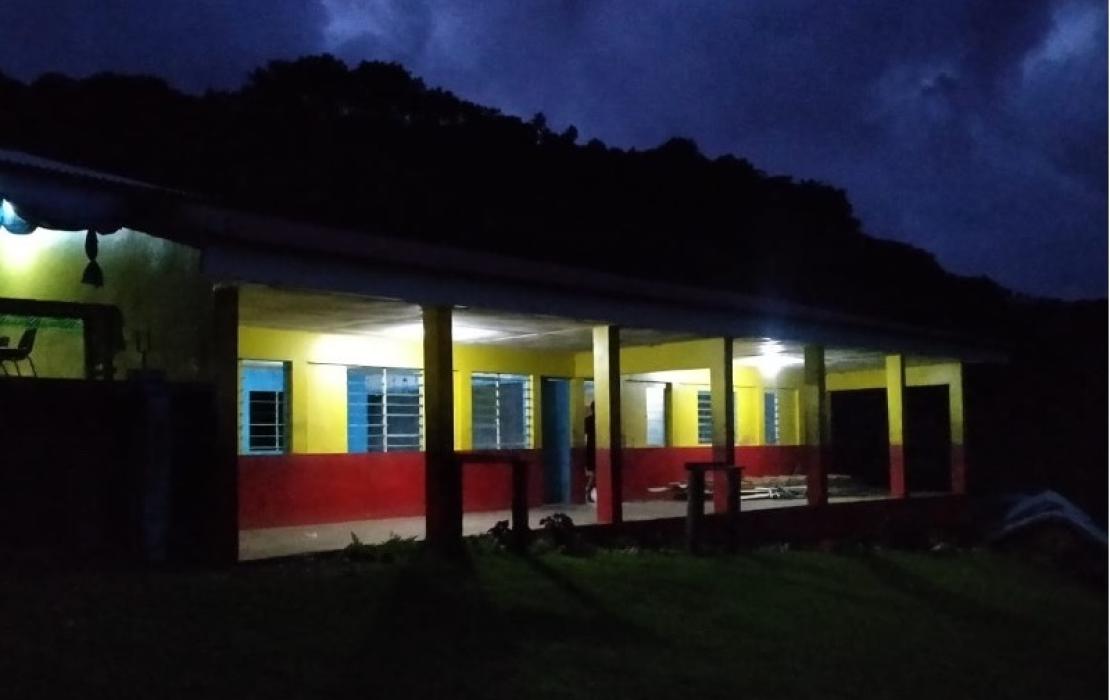
Photo: BRANTV
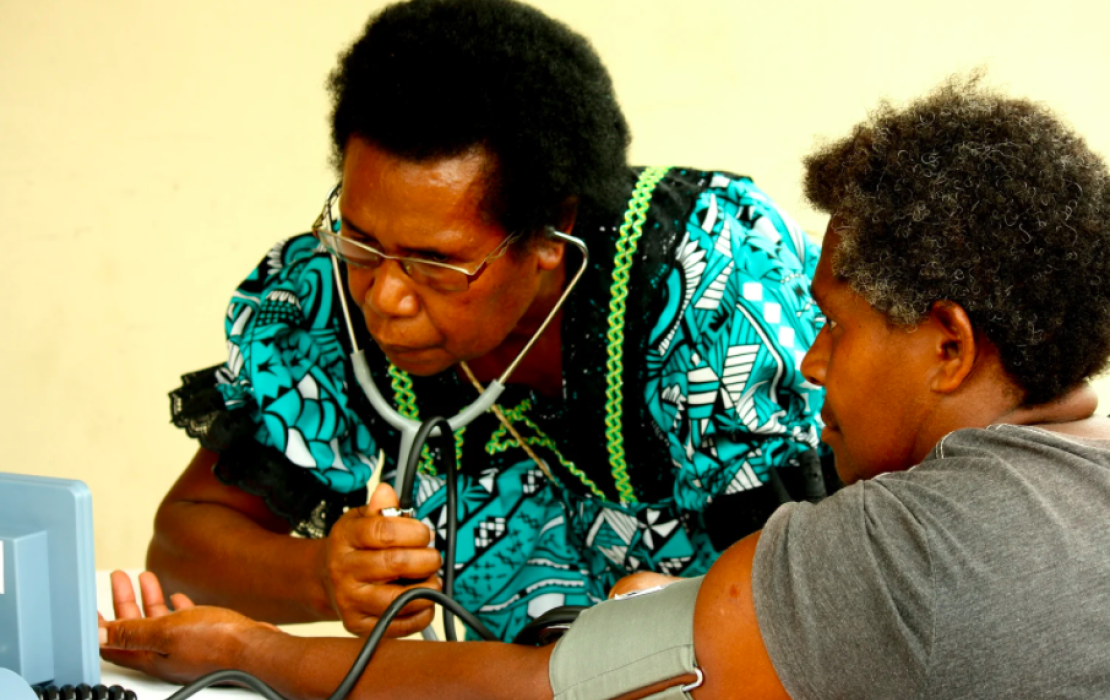
Photo: Ildiko Hamos/UNDP in the Pacific
Through its National Energy Road Map and in line with the goals of its Nationally Determined Contribution (NDC) under the Paris Agreement, Vanuatu aims for 100 percent rural electrification and a total transition to renewable energy by 2030. Given its unique geographic context, the country must heavily rely on distributed renewable energy systems like solar minigrids and potential hydro minigrids that can reach the most remote communities.
With UNDP’s support, including support under the Climate Promise on enhancing and implementing the country’s NDC, the Government has taken strides towards achieving this goal. The Barrier Removal for Achieving the National Energy Road Map Targets of Vanuatu (BRANTV) project, funded by the Global Environment Facility (GEF) and implemented by UNDP and the Government of Vanuatu through the Department of Energy of the Ministry of Climate Change, is part of these efforts. BRANTV is bringing renewable energy solutions to 37 communities across Vanuatu, revolutionizing the lives of more than 50,000 people.
The delivery model that BRANTV employs puts forward a commitment to sustainable, community-centered development, integrating each renewable energy installation within the community's existing governance structures. Various local groups—including women's associations, cooperatives, and schools—now oversee the management of these new energy systems, ensuring their sustainable operation and maintenance.
The successful implementation of the hybrid solar and hydropower minigrid in Loltong stands as a testament to this model, with plans to transition its management from the government to the community—a true symbol of empowerment and independence. This transformation marks a significant stride toward not only closing the energy gap in Vanuatu but also setting a sustainable example for similar communities worldwide.
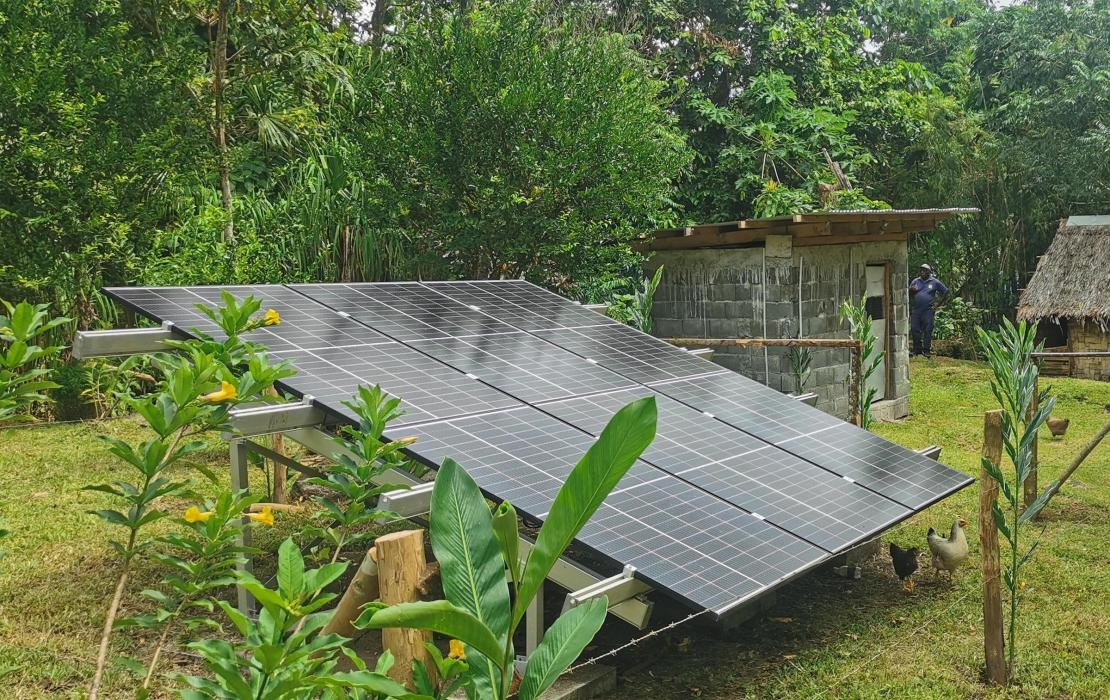
Photo: BRANTV
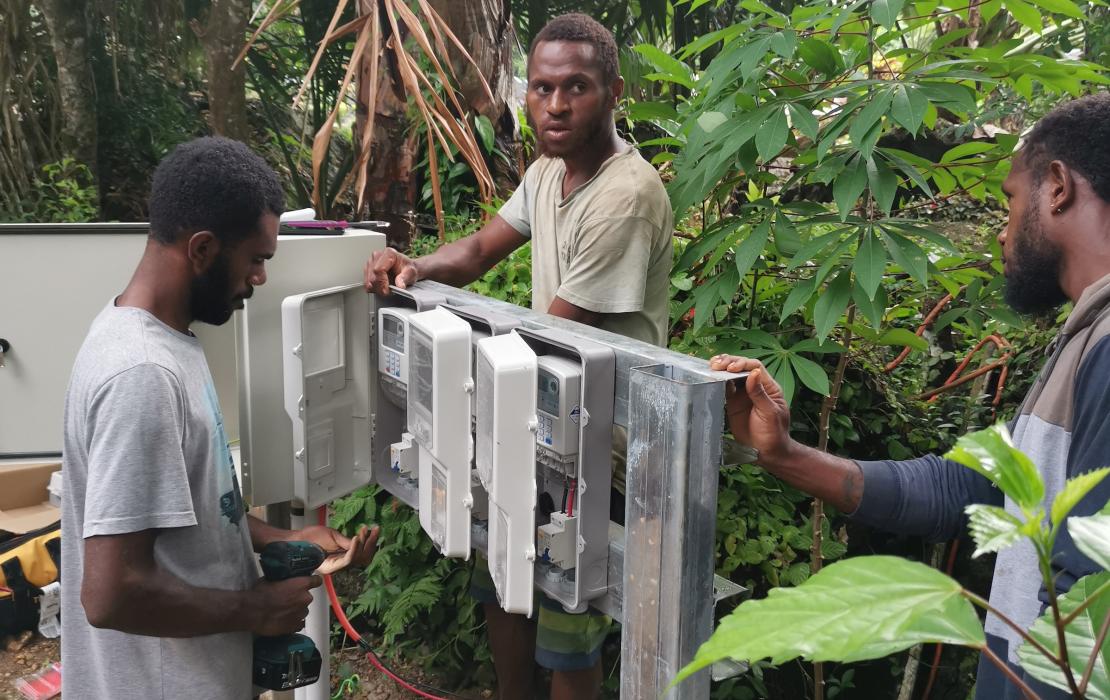
Photo: BRANTV
The transformations that the communities of Loltong, Marae and Liro have witnessed show what a difference access to renewable energy can make. These systems now bring into focus the possibility of economic prosperity for all remote communities in Vanuatu.
Despite these advancements, there are still issues that need to be ironed out. The fee collection for solar systems remains unregulated. Communities in Vanuatu are awaiting the formulation of the National Electrification Master Plan (NEMP) to guide future regulations and management models.
More investment is also needed to scale up these solutions across the islands. The Financial Support Mechanism, spearheaded by BRANTV with support from the National Green Energy Fund (NGEF), now provides soft loans to kickstart renewable energy projects, including to women-led households and enterprises through a microfinance scheme. It has also developed a plan to engage the private sector and commercial banks in these efforts.
Vanuatu’s story illustrates how innovation, when coupled with community-centric approaches and supportive financial mechanisms, can support both sustainable development and climate action. As the country continues to harness the power of renewable energy, it sets a pathway for other small island states, showcasing the power community-led initiatives can have in contributing to global sustainability goals and local prosperity.
